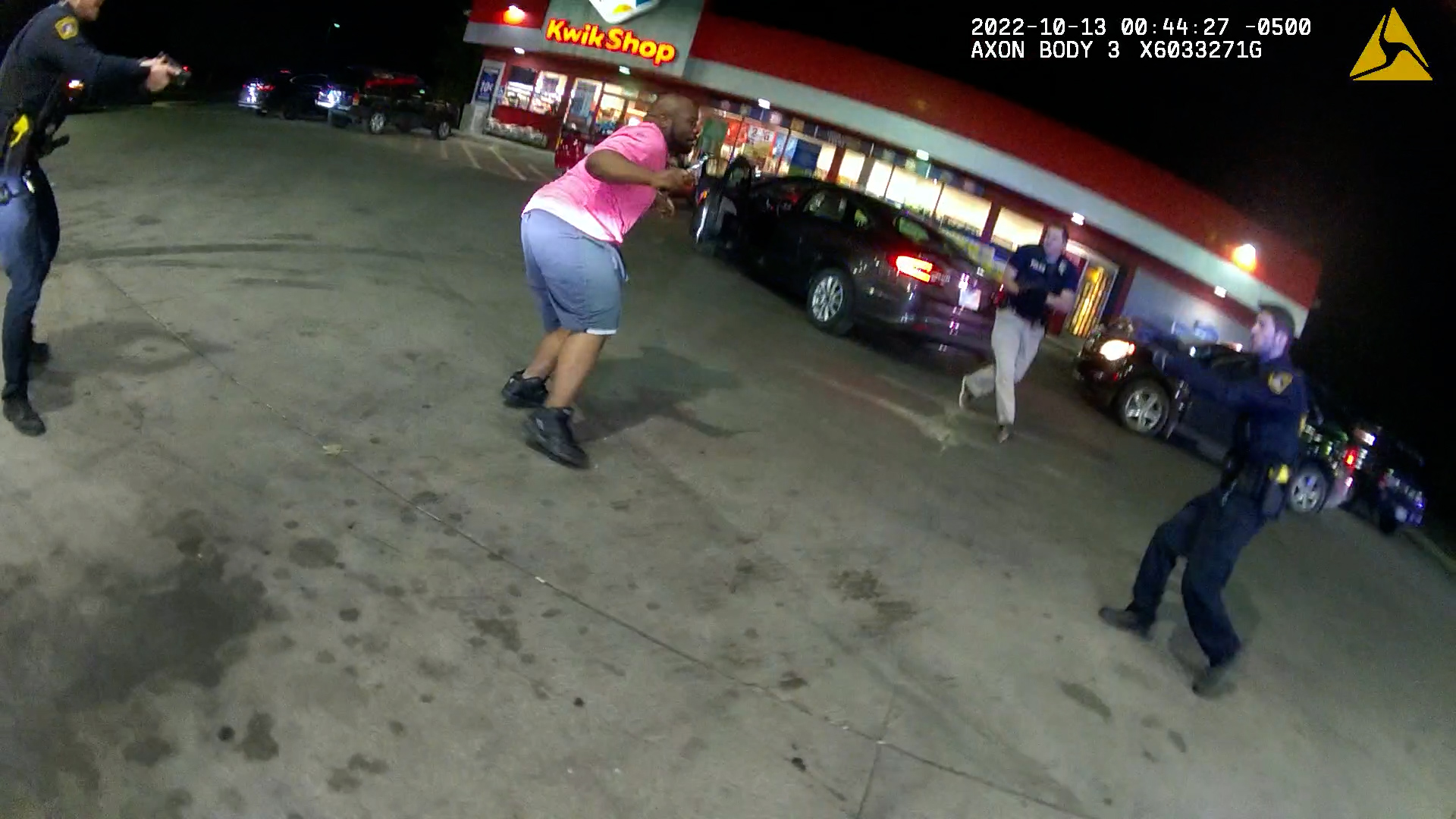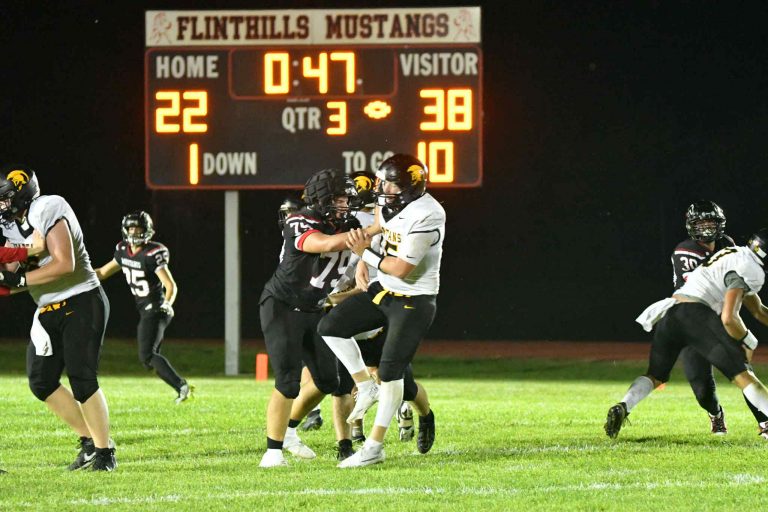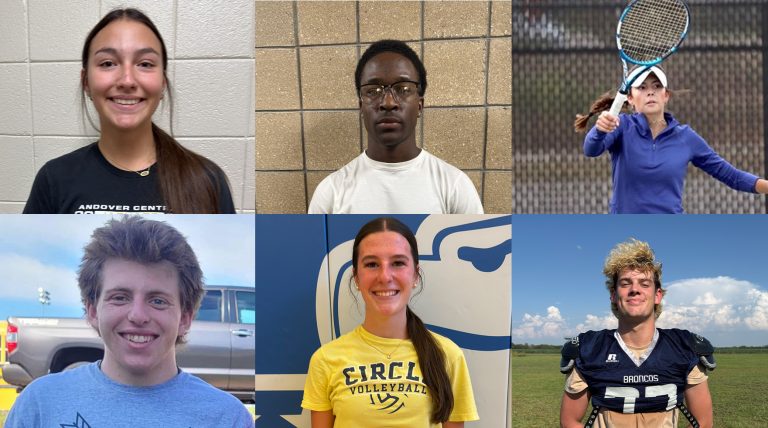By Sherman Smith
Kanas Reflector
TOPEKA — Newly disclosed videos show Topeka police shooting and killing a Black man in 2022 after he picked up a wrench and backed away from the officers in a gas station parking lot, contradicting the narrative authorities used to justify the officers’ actions.
The Topeka Police Department, Kansas Bureau of Investigation and Shawnee County District Attorney Mike Kagay have issued public statements that say police killed Taylor Lowery when he advanced toward them with a knife.
Da’Mabrius Duncan, as the mother of Lowery’s child and the administrator of his estate, filed a wrongful death lawsuit in August and amended it this month to name Topeka police officers Malcolm Gillum, Justin Good and Bradley Netherton, Sgt. Scott McEntire, Detective Alex Wall and the city of Topeka as defendants. LaRonna Lassiter Saunders, an attorney and advocate for the family, provided officer body camera videos to Kansas Reflector at the family’s request after a federal magistrate rejected the city’s arguments to keep the videos confidential.
The videos show Good responding to a domestic disturbance call at Lowery’s residence at 12:38 a.m. Oct. 13, 2022. When Good and another officer confront Lowery, who is holding a butcher knife, Lowery runs from police, gets in an SUV and drives to a nearby Kwik Shop gas station. Good signals dispatch for aggravated assault on a law enforcement officer. The video doesn’t show an assault.
Lowery drove to a Kwik Shop a half-mile from his house with McEntire and Wall in pursuit. According to the amended complaint, which is based in part on undisclosed surveillance video, Lowery approaches another vehicle in the parking lot while holding a knife and socket wrench. Wall signals dispatch for a carjacking.
McEntire and Wall, who weren’t wearing body cameras, exit their car with guns drawn and fire at Lowery as he runs from them, the amended complaint says. Lowery isn’t hit by the gunfire, but falls and drops both the knife and wrench as Good, Gillum and Netherton arrive.
The cameras worn by Good, Gillum and Netherton show McEntire shove Lowery, who reaches down to grab the wrench. As Lowery takes a step back with the wrench in his hand, the officers shoot at him 34 times.
An autopsy report documented 41 bullet wounds, including instances where a single bullet caused multiple injuries.
Moments after the gunfire ends, officers tell Lowery, who is motionless on the ground, they will administer medical aid if he lets go of the wrench. The videos capture conversations among the officers that make it clear they knew he was holding a wrench when they killed him.
The Topeka Police Department and Kansas Bureau of Investigation issued news releases on the day of the shooting that said Lowery threatened officers with a knife.
The officers “gave repeated commands to drop the knife,” KBI spokeswoman Melissa Underwood wrote in a news release. “Lowery then advanced toward officers holding the knife.”
The videos don’t support Underwood’s news release.
“In officer-involved shooting investigations, we strive to provide as much information as we can to the public as quickly as possible,” Underwood said in response to questions for this story. “Transparently providing preliminary details based on eyewitness statements is not ‘pushing a false narrative,’ even if once the full investigation concludes, additional or differing facts become known.”
The KBI investigated the killing, with future KBI director Tony Mattivi serving as legal counsel for Gillum as agents questioned the officer. The KBI concluded its investigation and presented the case file to Kagay, the district attorney, on Nov. 16, a month before Attorney General-elect Kris Kobach announced he would nominate Mattivi to lead the KBI.
Kagay produced a report clearing the officers in January 2023. Kagay’s report emphasizes that police first fired at Lowery while he was holding a knife, before the three officers who were wearing cameras arrived.
But the videos show Lowery wasn’t shot before he picked up the wrench.
Kagay’s report says “it is objectively reasonable that the officers mistook the wrench for the knife” when they killed him.
Kagay, responding to questions for this story, said his report “is a thorough and accurate summary of the investigative file.” He said civilian witness statements, which haven’t been made public, corroborate the narrative in his report.
Lauren Bonds, executive director of the National Police Accountability Project, said law enforcement agencies are culturally predisposed to create a narrative that justifies a shooting, and that it was “disappointing that the district attorney in this situation is trying to retroactively justify the false police narrative.”
Bonds referenced high-profile police killings of Tyre Nichols in 2023 in Tennessee, George Floyd in 2020 in Minnesota, and Walter Scott in 2015 in South Carolina as examples where initial police department statements did not match what happened in the video.
“You have so many examples of these discrepancies coming out, or flat out lies coming out, around a police killing, why would you expect the community to trust anything the police say when there is an officer-involved shooting going forward?” Bonds said.
Duncan, the administrator of Lowery’s estate, said in an interview that it was important for the public to see the video of Lowery’s death and know the truth.
Duncan said she asked the Topeka Police Department for a meeting after the shooting, but the department declined to meet with her. If she could talk to the officers who killed Lowery, she said, she would ask them a lot of questions that begin with: “Why?”
“Why didn’t they handle the situation better than they did?” she said. “Just why? Why do they lie? Why did they use my child’s father as a target practice? Why should I have my trust in you guys when you guys can’t even tell the truth?”
“There’s been situations where we needed to call the police, but, you know, I just don’t trust them,” Duncan added. “I don’t see them the same. I don’t feel that I’m protected.”
Rosie Nichols, a spokeswoman for Topeka, declined to answer questions for this story, including a question about the refusal to meet with Duncan. Nichols said the city would respond to allegations “through the appropriate legal process, not through the media.”
“Law enforcement officers face dangerous and unpredictable situations every day, risking their lives and mental well-being to provide safety and protection to our community,” Nichols said. “We will continue to vigorously defend our officers in this matter.”
The release of police video from officer-involved shootings is rare in Kansas. Agencies routinely cite exemptions in the Kansas Open Records Act to deny the release of the video.
Duncan’s attorneys filed a request for video and other records with the Kansas Bureau of Investigation, which denied the request. The KBI’s response said the records are considered part of a criminal investigation.
Topeka city attorney Amanda Stanley declined an open records request for the videos from Kansas Reflector. She claimed the release of videos would prejudice a jury pool and prevent officers from receiving a fair trial.
“It would be improper and potentially unethical to release the videos, which may be used in a manner that would undermine the legitimacy of the case by litigating this matter in the court of public opinion,” Stanley wrote.
U.S. Magistrate Judge Angel Mitchell had already rejected a nearly identical argument from the city in the litigation Stanley referenced.
After Duncan filed the federal lawsuit, the city was required to turn over evidence through a legal process known as “discovery.” That evidence is often kept under a protective order, meaning attorneys can’t share the files with the public. But Duncan’s attorneys at the Denning Law Firm in Overland Park asked the court for permission to make the videos public.
The city argued that police video should be kept secret because the plaintiffs intended to use the video to “publicly rebut” the district attorney’s report exonerating the officers.
The magistrate referenced arguments made by attorney William Denning in a December ruling authorizing the release of police video: “Plaintiffs respond that their counsel ‘has no intention of litigating this matter in the court of public opinion.’ Yet they insist defendants should not be permitted to ‘enjoy the fruits’ of public disclosure of selected facts and still shots by the KBI and DA, while ‘tying Plaintiff’s [sic] hands with a protective order covering the very sources of information that were used to publicly exonerate Defendants.’ ”
Mitchell determined the city and police officers couldn’t show how they would be harmed by the release of the video. The only concern the judge recognized was the need to protect contact information and birthdates for witnesses who were interviewed on camera, and to exclude images of minors.
“Defendants do not explain their theory that release of any other part of the footage could taint the jury pool,” Mitchell wrote. “In other words, defendants do not state what, if any, other portions of the video footage could cause a jury to view them in a negative light. Moreover, to the extent officer bodycam footage is at issue, courts tend to exclude such footage from protective orders based on the public’s strong interest in transparency of public incidents.”
The videos capture the five-minute span between Good knocking on Lowery’s door and the moment police kill him outside the Kwik Shop, as well as discussion among officers after the shooting.
When the gunfire ends, officers yell at Lowery to “get your hands down” as he bleeds out on the ground.
“We need you to put your hands out and let go of that wrench and then we can help you,” an officer shouts two minutes after the shooting, as Lowery lies motionless. “We want to help you, but you got to let go of the wrench and do what we say.”
One of the officers says: “We have the numbers. He’s got a wrench.”
Three minutes after the shooting, a commanding officer gives orders to others who are about to approach Lowery.
“He’s got an object in his hand. It looks like a socket wrench, alright?” the officer says. “We’re gonna get control of him. If he does anything but comply, we’re gonna light him up with the Taser. Do you understand?”
Four officers then approach Lowery, three with weapons drawn and one leading a dog. One of them kicks the wrench out of Lowery’s still hand.
Officers provide medical aid about five minutes after the shooting.
An officer approaches Netherton and asks: “What’s the quick skinny?”
“I honestly don’t know,” Netherton says. “They were saying he was carjacking people when I pulled up. He started attacking Scottie Mac. That’s where we’re at.”




